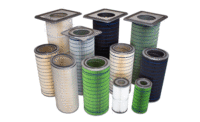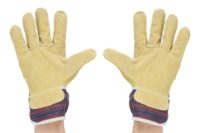Long-lasting arc flash PPE requires inspections & good maintenance

| Taking care of FR Clothing |
| Keep track of how old your FR clothing is |
| Keep your FR clothing very clean |
| Go easy on FR clothing washing |
| Inspect FR clothing for damage |
While arc flash clothing and personal protective equipment (or PPE) play a significant role in protecting workers from burns, eye damage and other injuries associated with arc blast explosions, preventive measures don’t end with simply putting on the right equipment. For anyone working in high voltage situations, it’s vital to remember that reliance on arc flash PPE is actually a give-and-take relationship.
In order for arc flash clothing and PPE to function properly, it needs to be regularly and carefully maintained, so it can retain all of its protective properties. To put it in a nutshell, if you take care of your PPE, your PPE will take care of you. Luckily, arc flash PPE maintenance is fairly simple — it’s really just a matter of keeping items clean, checking them for damage, and keeping track of how long they’ve been in active use. Here are some tips for getting started.
Taking care of flame-resistant clothing
• Keep track of how old your flame-resistant (FR) clothing is.
There are many different FR fabrics in use now, and each has a different lifespan. The general rule of thumb is to own five sets of arc flash clothing, with each set being washed and worn once per work week. Used according to these guidelines, treated 100 percent cotton (like Westex Indura®) lasts an average of 12 to 16 months, 88/12 cotton and nylon blends last for 18 to 30 months, and 93 percent Nomex® blends last anywhere from 2-1/2 to 4 years. Still in doubt? Check the manufacturer’s instructions.
• Keep your FR clothing very clean.
Dirt, oil, chemicals and other contaminants can easily wear down the flame-fighting properties of arc flash pants, shirts, hoods, jackets and coveralls, so it’s very important that FR clothing is washed as soon as possible after being soiled. And never re-wear arc flash clothing without laundering it first — dirty PPE is less effective than clean, and can actually increase your risk of injury.
• Go easy when washing arc flash clothing.
When it comes to laundering arc flash PPE, gentler is better. If you have the option between sending the clothing out to an industrial laundering service and just washing them at home, wash at home, because it inflicts less wear-and-tear, and helps the FR clothes last longer. Stick with mild detergent and warm (not hot) water, and then tumble dry on low. Never use bleach or any other chlorine-based detergents, because in most cases, they’ll just break down FR fabrics. It’s also a good idea to double-check the manufacturer’s instructions, just in case there are any additional washing directions.
Even small tears and cuts can greatly reduce the protective powers of FR clothing, so it’s important to regularly inspect your arc flash apparel for signs of wear and damage. In the event that damage is found, either repair it in accordance with the manufacturer’s specifications (special flame-resistant fabric patches and/or thread may be required), or replace the damaged article of clothing immediately. Never continue to wear damaged PPE, as it can greatly increase your risk of on-the-job injury.
Maintaining arc flash gloves
• Keep them clean. Just like with arc flash clothing, the cleaner you keep rubber arc flash gloves, the better they’ll protect you. Chemicals, oils and other petroleum-based products can cause rubber to weaken and break down, so if your PPE gloves become contaminated on the job, wash them off with tap water and a mild, bleach-free detergent to get rid of anything that’s not supposed to be there. Follow that with a thorough (but gentle) drying with a clean cloth.
• Check for embedded materials. With the rubber of arc flash gloves being so thick, it can be easy for small, sharp particles of foreign material to work their way into the gloves and go unnoticed. Even though the embedded debris may not be obvious or penetrate entirely through the glove’s wall, it still creates small holes and weak points that can compromise your safety. Before each wearing, roll gloves between your hands to feel for embedded particles. If any are found, have your gloves electrically tested to see if they’re still safe to use.
• Air test them before every wear. Even the tiniest pinhole in electrical gloves can be dangerous, so it’s extremely important to air test gloves before wearing them — every time. To air test an arc flash glove, simply hold the gauntlet (sleeve) end of it closed, trapping air inside. Then tightly roll the closed end downward, toward the fingers. If no air leaks out, the glove is free from holes.
• Have gloves electrically tested twice a year. Arc flash gloves need to be electrically tested at least every six months to ensure that they’re still able to protect against high voltage. Follow the stamped dates on your gloves closely. If you end up not using a pair of gloves within a year following their electrical test, have the gloves retested before putting them back into use.
• Store gloves properly. Heat, UV rays and pressure from other objects can all cause damage to gloves, so store them carefully when they’re not in use. Before putting them away, ensure that your gloves are clean and dry. Rubber arc flash gloves are best stored in cool, dark places, away from chemicals and heat sources. If you store your gloves in a bag or container with other items, make sure that nothing is piled on top of the gloves, or otherwise pushing them out of shape.
This article has been reprinted with permission from CableOrganizer.com, 1-866-222-0030 www.cableorganizer.com.
Looking for a reprint of this article?
From high-res PDFs to custom plaques, order your copy today!





